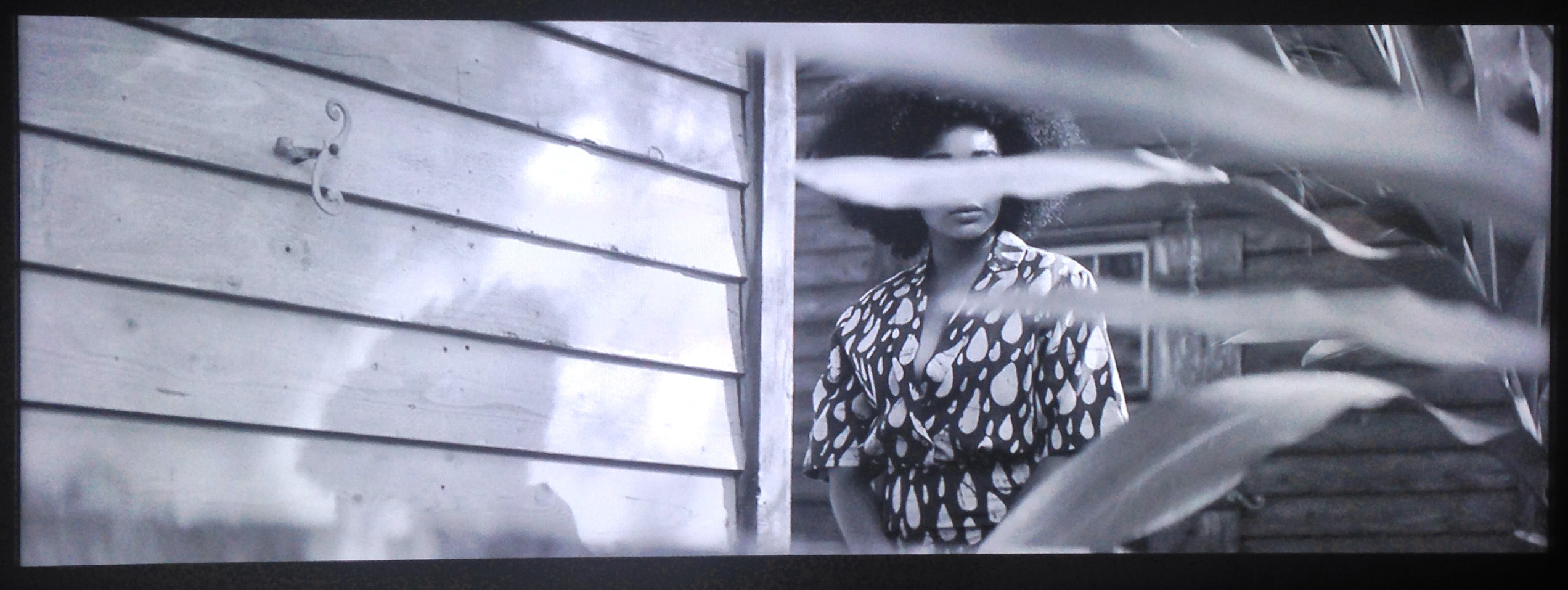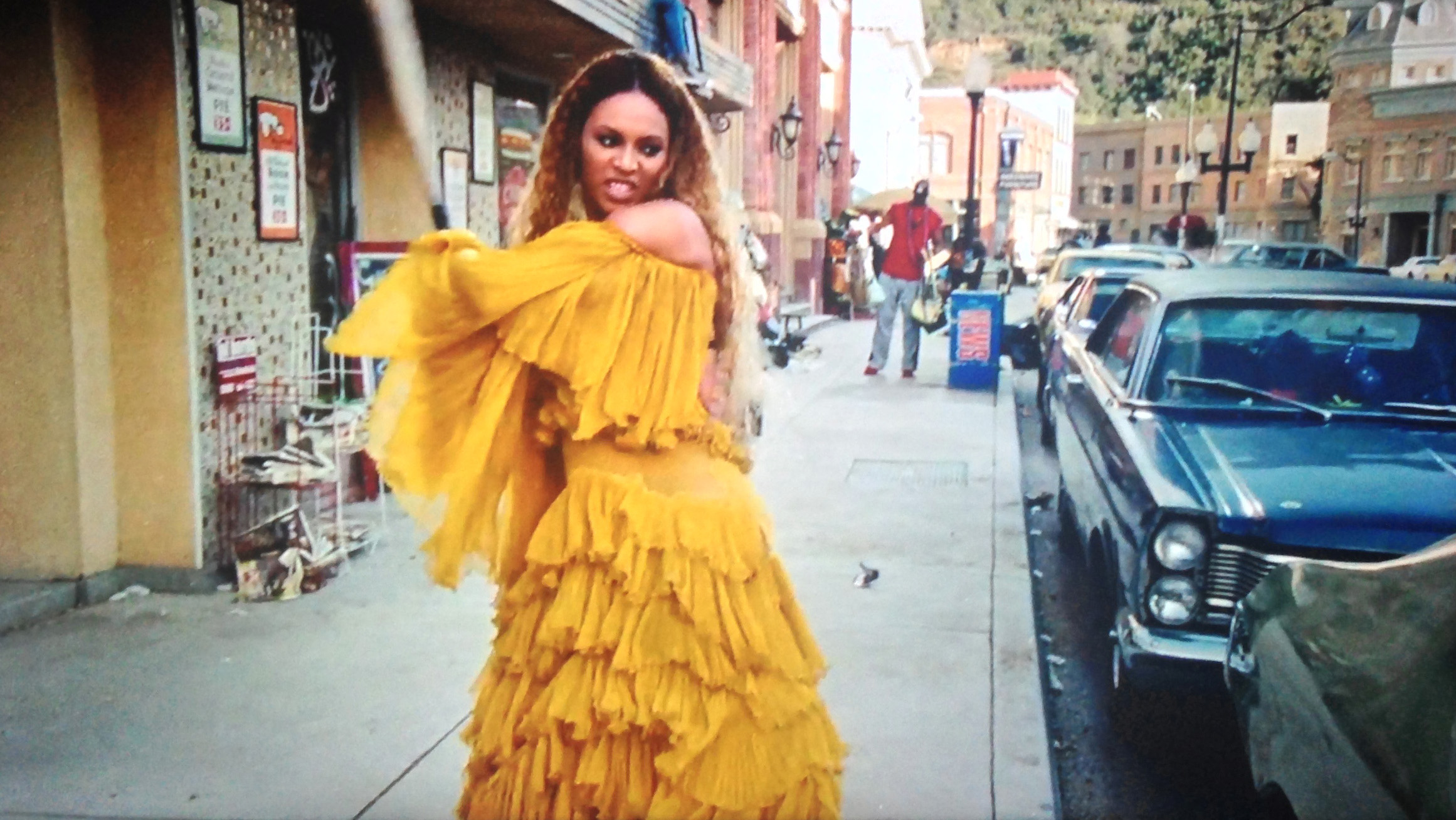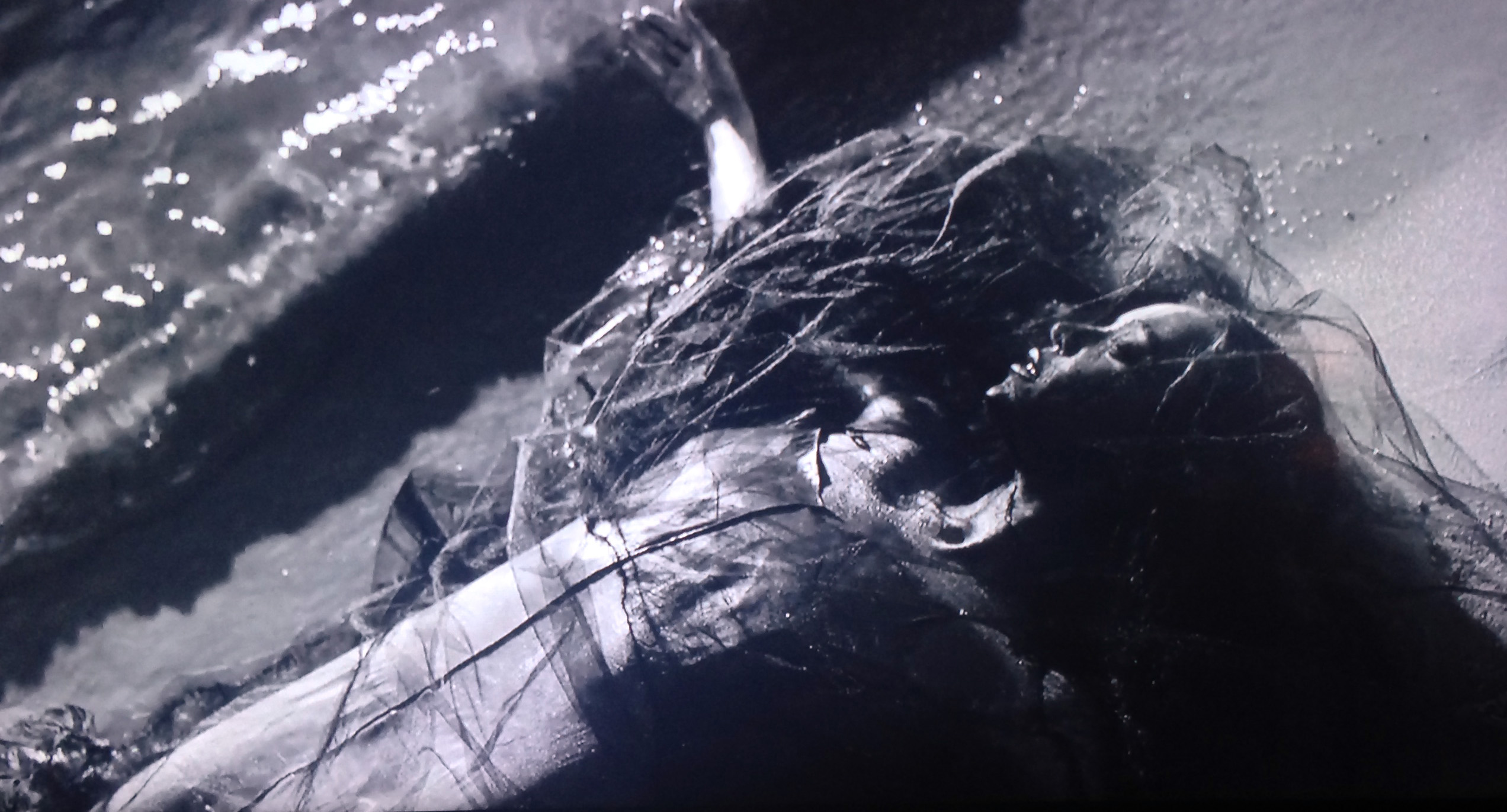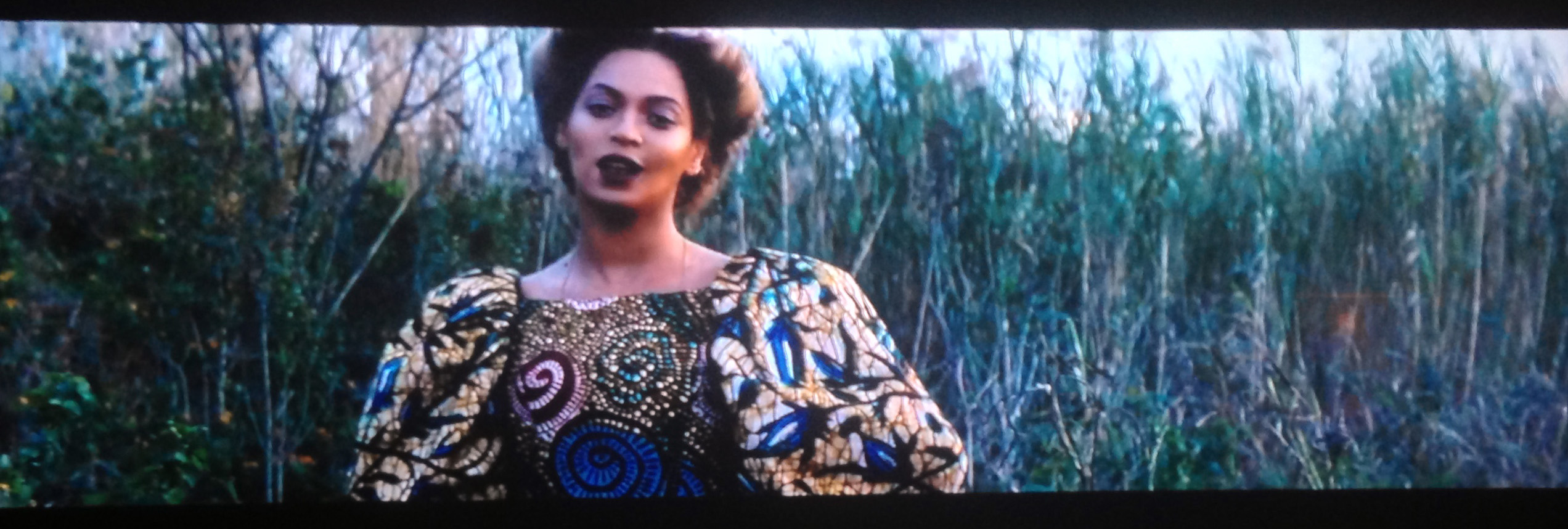“Lemonade” and the Eco Negro

(Another, slightly more fleshed out version of this essay is on Medium. The thoughts below were written in a frenzy after watching Lemonade the weekend it was released.)
Mother dearest, let me inherit the Earth.
The first few frames of Lemonade show weeds and reeds rustling in the wind, growing out of literal ruins. The framing device — a giant, mature live oak tree, dripping with Spanish moss — is the constant, the ever-present protection and watcher, growing still despite its painful Southern history. A cluster of powerful, creative, assertive black women adorn its branches, gazing firmly into the camera. Later, those same women will till the fertile earth and pull from it food and sustenance, coaxing life from the land, coated in color and sunlight.
I tried to make a home out of you.
But doors lead to trapped doors.
A stairway leads to nothing.
In many of the film’s scenes, the interior, especially of the home, is depicted as the location of pain, or at the very least, the location of acknowledgment of past pain. The antidote? Nature. An ecological balm for the wounds of black womanhood. A long brick-lined tunnel is a dark and mysterious place, but the grassy and sunlit prairie beckons at its end, full of the promise of relief. Stiffly dressed black women of the past stand in the tunnel, hands clasped, heads turned toward the sun, still learning the tactics necessary for escape and rebirth. More women stand and sit on wooden porches and stoops, gazing unapologetically at the viewer, questioning, demanding. Some of their faces are obscured by greenery, the wild unknown that simultaneously obscures and unveils.

In Lemonade, Beyonce’s newly released and brilliantly produced visual album, she transcends space and time, pulling her own experiences of love and fury and loss into conversation with the lives of our ancestors, women from the past who have wondered our same thoughts and cried our same tears. Women who worked the earth, learned its secrets, and passed them down to their daughters. The contemporary world, an often dark, angular, and harshly lit city, juxtaposes with the soft tones of the equally dangerous past, obscured by distance and disregard. At the close of Intuition, the first chapter, Beyonce leaps from the roof of a building and plunges into the quiet numbness of a room underwater, immersing herself in her pain and setting the stage for the drama and climax to come.

Denial shows Beyonce, decked in golden ruffles, skipping down the street of a perfect urban movie set, releasing her anger in the way we all wish we could. She knocks out windshields, busts in storefronts, and destroys a fire hydrant, letting forth a shower of rain that the neighborhood children dance in. She calls forth and releases the elements, water, wind, and fire, all beneath the backdrop of the distant forest.
In Anger, we find ourselves back indoors, lit by the flickering bulbs of the parking structure. Beyonce dons a thick animal skin, her head slowly lifting from between raised shoulders, the ferocious beast within having been roused. Water seeps in from cracks in the ceiling as denial’s flood is reduced to droplets. Apathy shows a school bus (incredibly named BOY BYE) full of black female allies adorned in white tribal paint, throwing up middle fingers to their foes and rivals. The houseplants sitting on the porch of their assumed destination are bright white: at this stage, even the escape of nature holds no appeal and is drained of its power.

In Emptiness and Loss, we find ourselves cast in red light, without warmth or organic elements, Beyonce and her sisters are held captive indoors, trapped in the cycle of working for money/the man. Accountability brings us to a finely appointed plantation house, decked out in kente cloth upholstery, tulips, and a bust of an African woman. Little black girls run around the house, trying to find roles models and trying to find themselves, while a wild storm threatens to break over the horizon. Beyonce then launches into her country song, riding horseback through the trees and dressed in the getup of a leader of Afro-Elizabethan royalty.

In the following chapter, Reformation, she’s crying on the astroturf before walking back into the waters to be baptized in the bayou, adorned in silver and surrounded by blossoms. Beyonce washes up on shore in Forgiveness, a new woman, asking us “Do you remember being born?” She sings a ballad of acknowledged pain and acceptance as a dying bouquet blows in the breeze. Resurrection sees her calling forth the women who have come before her to wrestle with the same demons, their portraits scattered on the branch. Mothers and sisters of slain black men hold their portraits beside vanitas vases filled with cut flowers. And in Hope we see the physical fruits of our labor, the bounty from the earth, being washed and sliced and prepared for eating.

An army of beautiful black women represent past, present, and future. They gaze outward from an outdoor stage before looking inward and celebrating each others’ gifts and talents, all on display for no one but themselves. Indoors Winnie Harlow dons of a crown of thorns and looks for answers in the mirror, while outdoors, Michaela DePrince dances for freedom. They all feast beneath the great old oak, sheltered by it, branches on our family tree. The women stand in solidarity and declare freedom from the pain and chains of the past.

Redemption, the final chapter, spells out the recipe for lemonade, for taking the burdens handed down to us from history and turning them into magic. The women stroll together and again are shown with faces obscured by plants, but this time it feels different. This time the plants are our prop, hiding the source of our power, that which can never be quantified. We see Beyonce in her power pose, hovering above the bay, propped up by the trunks of trees long dead but still present. The Ibeyi sisters bring indoors their harvest and a trio of women wearing bright colors turn their gaze toward the home, confronting their past tormenters. In the ending scenes, Beyonce is back at the ruins, walking amongst the reeds, powerful in her declaration of triumph and surrounded by plants that are also surviving, no matter what.

Throughout Lemonade, Beyonce and her squad of beautiful black women position themselves squarely in nature, fully accepting the power it bestows upon them, accessing its elemental strength, and using it to beat back the ghosts of the past and the grief of the present. The exquisite poetry of Warsan Shire ties each chapter together, swirling with references to the elements and the body. Situating the deeply corporeal text of Shire’s poetry in the soil, the trees, the weeds of the South identifies Lemonade as a work exploring the relationship between sense of self and sense of place. Along with Beyonce’s substantial embrace of feminism and social justice, she uses Lemonade to go further, delving into eco-critical and eco-feminist ideology. A prime example comes in her/Shire’s description of women’s oppression delivered at the hands of men. A closer reading could be interpreted as suffering experienced by the earth’s natural systems, delivered at the hand of man.
The poetry of black women finding themselves not in the home, but on the earth is something beautiful, bold, and never before so beautifully depicted. Our relationship with the outdoors extends far beyond the environment we live in today. It’s something deep, ancestral, and it’s one of the many origins of our pride and achievement. You can’t make lemonade without lemons. And lemons, like us, are of the earth.
